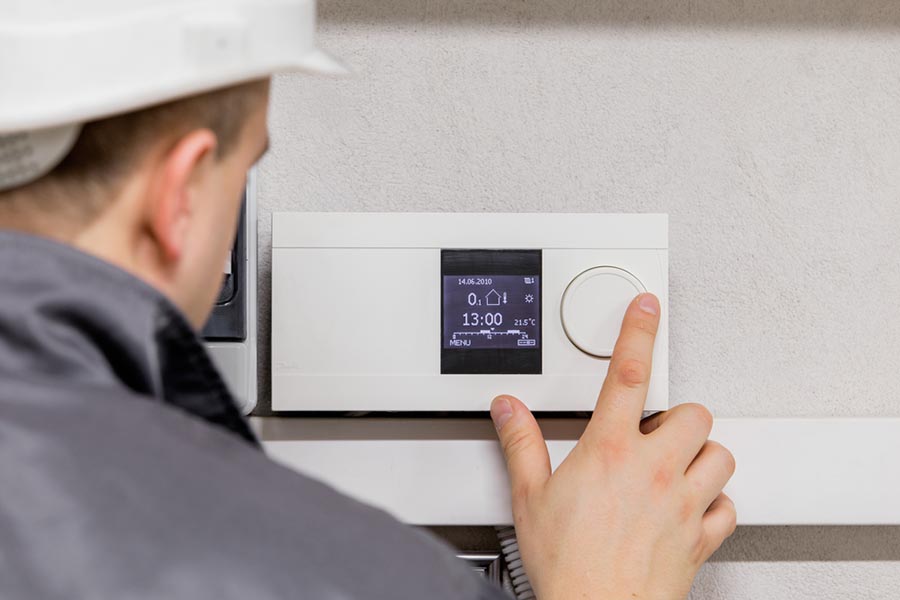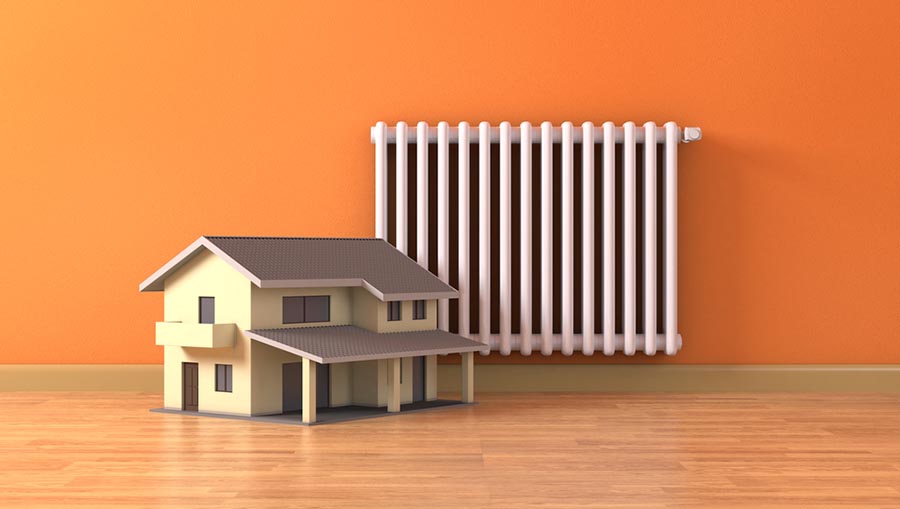5 potential causes of short-cycling (with solutions)
1. Filthy air filter
A dirty air filter is the most common cause of short-cycling. If the air filter is clogged with dirt, it won’t allow proper air flow to the heat exchanger. That can cause the furnace to overheat and forces the high limit switch to ride to the rescue by shutting the furnace off. When it cools, it will restart, and the cycle will continue.
You can easily prevent this type of short-cycling by being conscientious about changing your furnace’s air filter. You should clean or replace it monthly to allow your furnace to work at optimum capacity. Turn off the furnace, unscrew the panel and insert a new filter. Most of the time, this is the easy answer to short-cycling problem.
2. Thermostat issues

If you’ve eliminated a dirty air filter as the cause, the next most likely culprit for short-cycling is your thermostat. Like any piece of mechanical equipment, it’s not perfectly reliable, and may need attention periodically. If your thermostat isn’t working properly, it may be telling the furnace to shut off prematurely.
Shut off your thermostat, open the unit, and replace the batteries. Now, turn the system back on and monitor it as it runs for an hour to see if the problem is fixed.
You may also want to reconsider the location of your thermostat. If it is near a heat register, a space heater or in direct sunlight, it can be unduly affected by these heat sources and prone to shutting down prematurely.
3. Air leaks

Before you investigate more complex causes for your short-cycling problem, there’s another possible cause with a straightforward solution: poor insulation or air leaks that allow the newly heated air to escape and requires the furnace to fire up all over again.
Check your windows to see if any of them are open or if they aren’t sealed properly. If air is escaping, you may need to do some caulking around the frames to keep that warm air trapped indoors.
4. Parts problems
More challenging causes of short-cycling could relate to the furnace blower the flue or the flame sensor.
If the blower motor is off, the heat exchangers won’t be warming air and may become too hot, causing the furnace to shut off. If this is the case, air won’t blow through the vents, or if it does, it will be weak. Put your hand in front of a vent to check.
The device that shuts of the furnace if the air becomes too hot could be malfunctioning, and turning the furnace off prematurely. You will need a professional to determine this.
Or, the flue could be blocked, which means heated gases aren’t escaping properly and the furnace’s flue limit switch is causing the system to shut off before the flue gets too hot. Usually, there is a blockage in the flue that is causing the problem; an animal may have deposited some branches in the opening, for example. Get it checked and cleared out, and your system should be back in business.
Finally, if the furnace’s ignition system isn’t working properly and doesn’t produce a flame within four seconds, the flame sensor will shut the system down. Have a professional check the system if you suspect this to be the problem; a dirty or damaged flame sensor (thermocouple) or damaged ignitor could be the culprit.
5. Improperly sized HVAC system

If you’ve just moved into your home and find that the furnace is short-cycling regularly, it’s possible that your (HVAC) system is too large for your home.
If the system has greater heating power than is needed, it heats your house rapidly and shuts off. It turns on again soon afterward. Over time, your energy bill will be higher than it should be, since the system will use more power turning on and off frequently than it would if it ran consistently. It also results in more wear and tear on your system and a shorter life span. If you suspect this is the problem, contact an HVAC professional for assistance.
Related articles
Once you identify the problem and fix it, with or without the help of a professional, your furnace will be able to do its job properly and you’ll be more comfortable.
Commonly asked questions
How long is a furnace short cycle?
If your furnace turns on for a period of less than 7-8 minutes, it could be short-cycling. This span of time isn’t long enough for the furnace to meaningfully heat the home. A standard furnace cycle should be about 10-15 minutes on average.
Is furnace short-cycling dangerous?
A short-cycling furnace can be dangerous. Furances aren’t designed to switch on and off every couple of minutes. As a result, the added stress of short-cycling can quickly wear them out and lead to a total breakdown—a major issue during cold weather. As well, short-cycling signals that there’s already something wrong with the unit. Those issues, like blockages, can have other dangerous side effects such as carbon monoxide leaks. It’s best to address short cycling as quickly as possible.
Can I clean my own furnace?
It is possible to clean a furnace (at least partially) yourself, but make sure you power it off and shut off the gas before you do. You can open the unit and vacuum as much dust as you can reach. You may also be able to detach the blower and clean the blades with a vacuum and brush. Finally, changing the filter is a simple task you can do on your own (and you should, every few months).
How should I check for air leaks?
Large air leaks in your ductwork are easy enough to find by listening carefully. Move along your ducts and check for hissing sounds, especially around seams and connections. If the ducts are near insulation, leaks will eventually darken the insulation around them over time. To track down tiny leaks, light a small incense burner and use the smoke trails to seek out small air currents.
Watch the full video
Want to learn more? Visit our Home Improvement resource centre for tips and inspiration for your next big home improvement project. Or, get an online quote in under 5 minutes and find out how affordable personalized home insurance can be.
About the expert: George Baral
George Baral has an MBA and a masters' degree in chemistry. He spent almost 35 years inspecting and evaluating heating and air conditioning systems before retiring. He obtained a California general contractor's license to start a company focusing on energy-efficient construction, became certified as a LEED AP and earned a NATE (North American Technical Excellence) certification, which provides advanced training for HVAC technicians.




